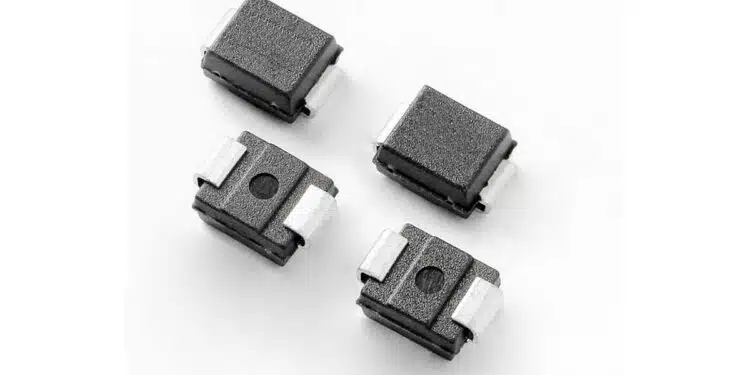New TPSMB asymmetrical TVS Diodes from Littelfuse provide superior gate driver protection for automotive SiC MOSFETs. Engineered for next-gen EV infrastructure, delivering compact, single-component solutions for power efficient onboard charging and inverters.
Littelfuse Inc, an industrial technology manufacturing company empowering a sustainable, connected, and safer world, announced the launch of its TPSMB Asymmetrical TVS Diode Series, the first-to-market asymmetrical transient voltage suppression (TVS) diode specifically designed for the protection of Silicon Carbide (SiC) MOSFET gate drivers in automotive applications.
This innovative product addresses the increasing demand for reliable overvoltage protection in next-generation electric vehicle (EV) systems, delivering a compact, single-component solution that replaces multiple Zener diodes or TVS components traditionally used for gate driver protection. View the video.
The TPSMB Asymmetrical TVS Diode Series provides superior protection for SiC MOSFET gate drivers, which are prone to overvoltage events due to faster switching speeds compared to traditional silicon-based MOSFETs or IGBTs. The unique asymmetrical design of the TPSMB Series supports SiC MOSFETs’ differing positive and negative gate driver voltage ratings, ensuring enhanced performance in a variety of demanding automotive power applications where SiC MOSFETs are used, including:
- Onboard chargers (OBCs)
- EV traction Inverters
- I/O interfaces
- Vcc buses
These applications demand high-performance overvoltage protection (OVP) for SiC MOSFET gate drivers to ensure optimal performance, longevity, and efficiency.
Charlie Cai, Director of Product Management, Protection Business, Littelfuse, emphasizes the value this product brings to automotive engineers: “The TPSMB Asymmetrical TVS Diode Series offers an innovative solution for SiC MOSFET gate driver protection, eliminating the need for multiple components and simplifying the design process for engineers. Its compact, reliable design ensures that critical automotive power systems are safeguarded against overvoltage events, supporting the continued advancement of electric vehicles and other high-performance applications.”
The TPSMB Asymmetrical Series Surface-Mount TVS Diode offers the following key features and benefits:
- A Single-Component SiC MOSFET Gate Driver Protection: Eliminates the need for multiple Zener or TVS diodes, streamlining design and reducing component count.
- Asymmetrical Gate Driver Voltage Protection: Designed to protect SiC MOSFET gate drivers, which require different negative and positive voltage ratings.
- Compact Design: Available in a DO-214AA (SMB J-Bend) package, the series is ideal for space-constrained automotive designs.
- Automotive-Grade Quality: AEC-Q101-qualified, ensuring the highest reliability for automotive applications.
- High Power Dissipation: 600W peak pulse power dissipation (10×1000μs waveform) offers robust protection against transient overvoltage events.
- Low Clamping Voltage: VC < 10 V @ 30 A (8/20 µs) for optimal negative gate drive protection.
- Wide Frequency Stability: Stable capacitance across a wide operating frequency range, up to 2 MHz, making it ideal for SiC MOSFET applications.
- Compatible with Leading SiC MOSFETs: Suited for use with Littelfuse and other market-leading automotive SiC MOSFETs.
Availability
The TPSMB Asymmetrical Series Surface-Mount TVS Diode is available in tape and reel format in quantities of 3,000. Sample requests are accepted through authorized Littelfuse distributors worldwide.
































